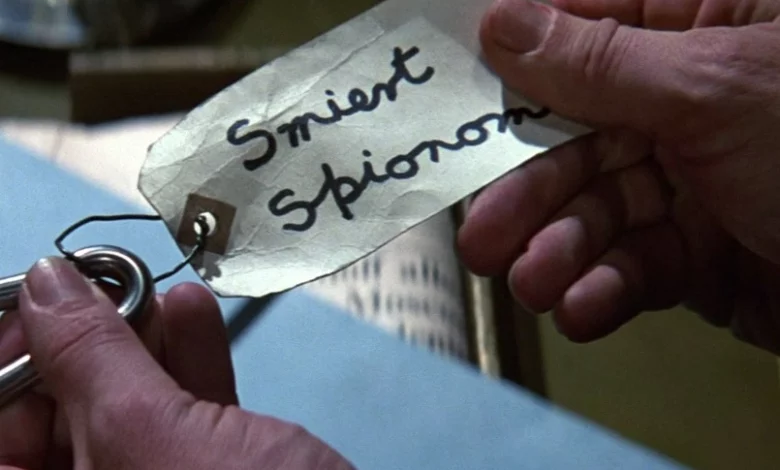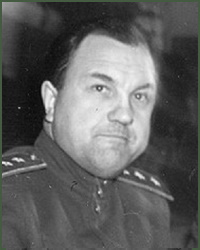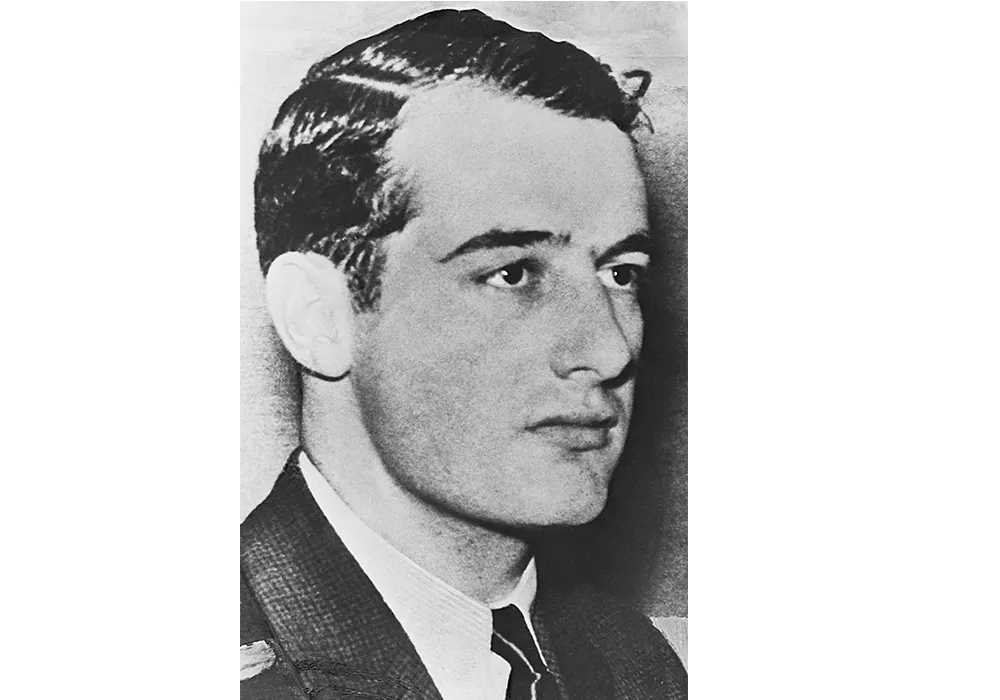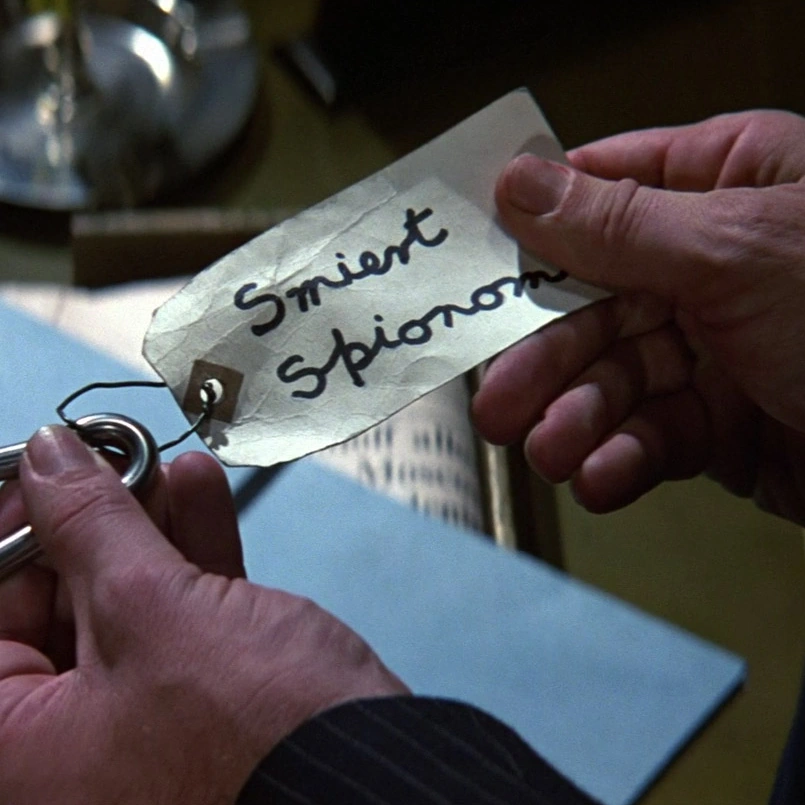Exploring SMERSH From “The Living Daylights”
the Secret Intelligence Organization from James Bond's World

Welcome to an in-depth exploration of SMERSH, the legendary Soviet counterintelligence organization that gained notoriety in the world of James Bond. From its dramatic origins during World War II to its covert operations and enduring legacy, this article delves into the captivating history of SMERSH. Uncover the secrets of this enigmatic organization, its role in combating espionage, and its impact on intelligence operations during and after the war. Join us as we journey through the shadows of intrigue, espionage, and the world of SMERSH from the James Bond movie “The Living Daylights.
Key Takeaways
- SMERSH, an acronym for “Smert Shpionam!” (Death to Spies!), was the Chief Counterintelligence Directorate of the USSR during World War II.
- The organization was formed by Stalin in 1943 and played a vital role in eliminating subversion and collaboration in territories recaptured from the Nazis.
- SMERSH operated clandestinely, with officers embedded throughout the Red Army and Navy, reporting directly to Stalin.
- The organization conducted successful counterintelligence operations, including the infiltration of German spy networks and the turning of double agents.
- SMERSH’s methods were controversial, with accusations of brutality, torture, and political motivations.
SMERSH: The Origins and Purpose
SMERSH emerged as the Chief Counterintelligence Directorate of the People’s Commissariat of Defence of the USSR in April 1943. Joseph Stalin personally formed this organization by consolidating counterintelligence elements of the NKVD, placing it under his direct control. While its official mandate was counterintelligence operations, SMERSH became Stalin’s tool for eliminating subversion and collaboration in territories recaptured from the Nazis.
The Threat of German Sabotage and Espionage
Following the crushing defeats of the Wehrmacht in Moscow and Stalingrad, Germany resorted to “secret war” tactics, employing massive sabotage and espionage behind enemy lines. Equipped with physical prowess, fanatical devotion to Nazism, and extensive knowledge of the languages spoken in the USSR, German intelligence operatives posed a formidable and cunning enemy. The vast forests and marshlands of western Russia provided ideal hideouts for these mobile militant groups.
Birth of SMERSH: The Fight Against Spies
The original proposal for a Soviet counterintelligence organization initially named it SMERINSH, an acronym for “Death to Foreign Spies.” However, Stalin removed the word “foreign” when approving the organization in March 1943, resulting in SMERSH being established as a force combating both foreign and domestic spies.
On April 19, 1943, Stalin appointed Viktor Abakumov to head SMERSH. Known for his brutal methods and hands-on approach to torture, Abakumov led SMERSH to become one of the most effective counterintelligence organizations of World War II. According to the General Committee of Defense of the USSR’s decision on April 21, 1943, SMERSH was tasked with fighting espionage, sabotage, terrorism, and other subversive activities of foreign intelligence units in the Red Army.

SMERSH Operations and Impact
SMERSH operated clandestinely, with its officers discreetly embedded throughout the Red Army and Navy, wearing no distinguishing badges. They reported any suspicious or “inappropriate” behavior to Abakumov, who, in turn, answered directly to Stalin. SMERSH’s reach extended beyond counterintelligence to include interrogations, executions, and the management of Soviet prisoners of war.
The organization was notorious for its ruthless methods, exemplified by its imprisonment of writer Aleksandr Solzhenitsyn in a gulag for criticizing Stalin in a letter. Some accounts even attribute the execution of alleged “spy” Raoul Wallenberg to SMERSH. Additionally, SMERSH successfully turned German army spies into double agents and dealt with Nazi defectors, including the unresolved case of the “Klatt Bureau,” a German espionage network operating in the USSR.

Intelligence Setbacks and Collaborative Efforts
During World War II, SMERSH faced intelligence setbacks, including the Rote Kapelle (Red Orchestra) operation, a double-cross network that provided disinformation to Soviet intelligence services from 1942 to 1945. This Gestapo-led operation captured several Soviet agents who were turned into double agents, significantly impeding Soviet intelligence efforts.
A significant collaboration between SMERSH and the Nazis is believed to have occurred with the creation of a secret Nazi cadre organization known as HACKE. Gestapo Chief Mueller allegedly informed the Soviets of Bormann’s plan for the Fourth Reich, and SMERSH, led by Gen. Abakumov, took immediate action to penetrate and exploit this organization. The fate of Mueller remains a debated mystery, with reports suggesting that he successfully escaped to the Soviet Union.
Post-War and Disbandment
Following the capture of Berlin, SMERSH created operative groups to apprehend the leaders of the Reich. Among its achievements was the discovery of the charred remains of Paul Joseph Goebbels, synonymous with stupefying propaganda. SMERSH officers, numbering over 30,000 during the war, demonstrated their dedication by sacrificing their lives, with more than 6,000 perishing and hundreds reported missing. Four SMERSH members were posthumously awarded the title Hero of the Soviet Union.
Post-war, SMERSH primarily focused on interrogating and executing returning Soviet prisoners of war. At Stalin’s insistence, SMERSH represented the Soviet Union at the Nuremberg Trials. In the spring of 1946, SMERSH disbanded officially, leaving behind a legacy of mystery and effectiveness as one of the world’s most enigmatic counterintelligence organizations.
Abakumov’s Reign and Downfall
Viktor Abakumov’s emphasis on intelligence operations against the United States played a significant role in his appointment as the Minister of the Ministry for State Security (MGB) in October 1946. Stalin aimed to limit the power of Lavrenty Beria, the head of the NKVD, by giving Abakumov control over the ministry. Abakumov’s tenure witnessed the infamous “Leningrad Affair,” resulting in the execution of Politburo members Nikolai Voznesensky and Aleksei Kuznetsov.
However, in late 1951, Abakumov fell out of favor and was replaced by S. D. Ignatyev. His downfall began with the Doctor’s Plot, a conspiracy exposed by MGB employee Mikhail Ryumin, who bypassed Abakumov and reported directly to Stalin. Despite Stalin’s death unraveling the Doctor’s Plot, Abakumov remained imprisoned. He faced trial for his involvement in the Leningrad Affair and was ultimately executed on December 18, 1954, or according to some sources, December 19, 1954.
Ivan A. Serov: A Complex Figure
Ivan A. Serov, a confidant of Nikita Khrushchev, played a prominent role in the post-war era. His activities during World War II included defending Moscow and Stalingrad, supervising the evacuation of industrial enterprises, and participating in the offensive to drive the Germans out of the Caucasus. Serov’s involvement in mass deportations, such as those of the Chechen-Ingush and Crimean Tartar populations, mar his legacy. Nevertheless, he received numerous accolades and was eventually appointed as the first chairman of the newly formed KGB.

SMERSH in Popular Culture
Thanks to Ian Fleming’s James Bond series, SMERSH gained international recognition in popular culture. In the first Bond novel, SMERSH serves as a key adversary, with the French communist Le Chiffre acting as its paymaster. Bond’s encounters with SMERSH agents and his daring exploits against this formidable organization have captivated readers and moviegoers for decades.

FAQ:
1. What was the main purpose of SMERSH?
SMERSH, the Chief Counterintelligence Directorate of the USSR during World War II, had a dual purpose. Its official mandate was to conduct counterintelligence operations, focusing on combating espionage, sabotage, terrorism, and other subversive activities of foreign intelligence units within the Red Army. However, SMERSH also served as Stalin’s tool for eliminating perceived “subversion” and collaboration in territories recaptured from the Nazis. This included targeting both foreign and domestic spies, making SMERSH a formidable force in the Soviet Union’s fight against espionage.
2. How effective was SMERSH during World War II?
SMERSH was widely regarded as one of the most effective counterintelligence organizations during World War II. Its officers operated undercover, without any distinguishing badges, throughout the Red Army and Navy. By reporting suspicious and inappropriate behavior to their superiors, who answered directly to Stalin, SMERSH played a crucial role in identifying and neutralizing enemy spies. The organization’s actions, such as the successful turning of German army spies into double agents, contributed significantly to Soviet intelligence efforts. Despite controversies surrounding its methods, SMERSH’s effectiveness in countering espionage cannot be denied.
3. What were some of the notable operations conducted by SMERSH?
SMERSH undertook various operations throughout its existence. One significant operation was the infiltration and dismantling of the German espionage network known as the “Klatt Bureau,” which operated within the USSR. SMERSH also played a role in the repatriation of Soviet displaced persons and prisoners-of-war, gathering intelligence from German scientists and research facilities, and managing East German uranium mines through forced labor. Additionally, SMERSH was involved in the investigation and prosecution of war criminals, representing the Soviet Union at the Nuremberg Trials. These operations showcased the breadth of SMERSH’s activities during and after the war.
4. How did SMERSH collaborate with other intelligence agencies?
While SMERSH primarily operated as a Soviet counterintelligence organization, there were instances of collaboration with other intelligence agencies. One such collaboration involved SMERSH working with Gestapo Chief Mueller, who reportedly informed them about Martin Bormann’s secret Nazi cadre organization, HACKE. SMERSH recognized the importance of HACKE and sought to penetrate the organization to further Soviet goals. Additionally, during the war, SMERSH benefited from the information extracted by Soviet intelligence from German sources, contributing to the Soviet military successes. These collaborations highlight the complex nature of intelligence operations during that time.
5. What led to SMERSH’s disbandment?
SMERSH was officially disbanded in the spring of 1946. The exact reasons behind its disbandment are not entirely clear. It is likely that a combination of factors played a role, including the changing political landscape after World War II, internal power struggles within the Soviet Union, and the evolving priorities of intelligence and security agencies. The disbandment of SMERSH marked the end of an era and the beginning of new intelligence structures and strategies within the Soviet Union.
6. Were there any notable individuals associated with SMERSH?
Yes, several notable individuals were associated with SMERSH. Viktor Abakumov, as the first and only chief of SMERSH, played a significant role in shaping the organization and its operations. Abakumov’s leadership, characterized by brutality and hands-on involvement in interrogations, contributed to SMERSH’s reputation as an effective counterintelligence force. Ivan A. Serov, another prominent figure, served as the Deputy Chief for Civil Administration of the Soviet Administration in Germany and later became the first chairman of the newly formed KGB. These individuals left their mark on the history of SMERSH and Soviet intelligence.
7. Did SMERSH have any long-term impacts?
Despite its relatively short existence, SMERSH had significant long-term impacts. The organization’s methods and operations influenced subsequent intelligence and security agencies in the Soviet Union, such as the KGB. The reputation of SMERSH, both as an effective counterintelligence force and a feared organization, became part of intelligence folklore. Additionally, the portrayal of SMERSH in popular culture, especially in James Bond novels and movies, contributed to its enduring legacy in the public imagination.
8. What were some controversies surrounding SMERSH?
SMERSH operated under the authoritarian rule of Stalin, and its methods were often brutal and ruthless. Controversies surrounded its use of torture during interrogations and its role in executing perceived enemies of the state. SMERSH’s involvement in the purges and trials of the post-war period, such as the “Leningrad Affair,” raised concerns about political motivations and the abuse of power. While the organization was successful in countering espionage, its methods and actions remain subject to historical debates and ethical discussions.
9. How did SMERSH contribute to Soviet intelligence successes?
SMERSH’s contribution to Soviet intelligence successes was multi-faceted. By infiltrating and turning German spies into double agents, SMERSH acquired valuable information that significantly aided Soviet intelligence operations. The dismantling of German espionage networks and the apprehension of key leaders of the Reich further weakened the German war effort. SMERSH’s interrogations and intelligence gathering from returning Soviet prisoners of war also provided critical insights. Ultimately, SMERSH’s efforts, combined with other Soviet intelligence agencies, played a crucial role in the overall success of the Soviet Union during World War II.
10. What is SMERSH’s enduring legacy?
SMERSH’s enduring legacy lies in its enigmatic nature and its representation in popular culture. The organization’s name, associated with secrecy, espionage, and ruthless tactics, continues to captivate the imagination of audiences worldwide. SMERSH’s portrayal in James Bond novels and movies, where it serves as a formidable adversary to the iconic spy, has cemented its place in the annals of espionage fiction. While the organization itself no longer exists, SMERSH remains a symbol of the shadowy world of intelligence and intrigue.
CONCLUSION
SMERSH, the mysterious and formidable Soviet counterintelligence organization, remains an intriguing chapter in the history of espionage. From its dramatic origins to its controversial methods, SMERSH played a pivotal role in the Soviet Union’s fight against espionage during World War II. Its operations, although shrouded in secrecy, left a lasting impact on intelligence strategies and the subsequent formation of intelligence agencies. SMERSH’s legacy lives on, immortalized in literature and film, forever intertwined with the world of James Bond. While the organization’s methods and actions continue to be subject to historical debates and ethical discussions, the enigmatic aura surrounding SMERSH ensures its place in the annals of intelligence history.










4 Comments